Boost the versatility, functionality and overall usefulness of your smartphone, whether you capture photos or videos, with these elite accessories.
For convenience and accessibility, smartphones clearly lead the pack of capture devices by miles. And the image and video quality smartphones produce improves every year. Although we still argue that modern mirrorless and DSLR cameras are better overall choices for serious photography, we can’t deny that the performance gap shrinks month by month.
Who knows? Maybe someday your wristwatch, eyeglasses or bellybutton ring will surpass smartphone-as-camera in popularity. Until that happens, explore these advanced accessories and enhance the overall experience of smartphone image making.
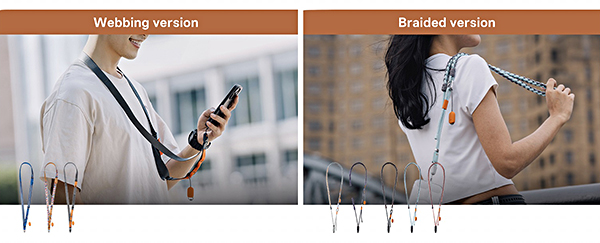
Accelerate Accessibility
Photographers wear their cameras around their neck or looped over their shoulder. Smartphone users typically carry their device in their pocket or purse. See the disconnect?
Add a PGYTECH LinkGo smartphone camera strap to your kit and your smartphone will always be instantly accessible.

It attaches using a tear-resistant mounting tab that fits inside most full-cover phone cases. The covert design does not interfere with normal phone use when the strap is removed, and tripod mounting brackets can still be used. Note that a case is required for use.
PGYTECH LinkGo smartphone camera straps are available in three versions: webbing, braided (Sleek) and braided (“Gearup”) and in a broad spectrum of colors. All include a handy cleaning cloth tucked into a tiny pouch.

Order directly from PGYTECH. Prices: Webbing $21.95, Braided Sleek $24.95, Braided Gearup ($32.95). The Webbing and Braided Gearup styles feature attachment points for accessories.
For the record, I used a PGYTECH LinkGo smartphone strap for about two weeks, just to get a feel for it. I like it, although smartphones are not my weapon of choice when it comes to photography. I anticipate great response from Gen Z members, many of whom are young adults now. Highly recommended.

Shoot Like A Leica
Get the “Leica Look” without buying a Leica. And it’s free.
Leica Camera AG recently released Leica LUX, an iOS app that enables iPhone shooters to experience prominent aspects of Leica photography. The new app is available in both free and subscription versions with features divided accordingly. No additional accessories are required, and it’s available from the Apple store now.
The free version of Leica LUX includes Automatic Photo mode and Aperture Priority mode, emulation of the Leica Summilux-M 28 mm f/1.4 ASPH, and five Leica Looks. The free mode is limited—but hey—it’s free and it’s fun. And you can shoot like-a-like-a.
Using the subscription version of the app in Aperture Priority mode, iPhone photographers can capture images that emulate shots taken with certain classic Leica lenses including the Leica Summilux-M 28mm f/1.4 ASPH and the Leica Noctilux-M 50mm f/1.2 ASPH.
Leica LUX is for iPhones only at this time; no word on availability for Android devices.

Edit In Photoshop – For Free
All this while you thought Photoshop was expensive and just for pros, right? Wrong!
Adobe recently announced a FREE version of Photoshop for the iPhone, made even more attractive by an upgrade path to a new paid Photoshop Mobile and Web plan that provides more advanced tools.
The free app includes core imaging tools like Layers, Masks, and popular Firefly-powered Generative Fill as well as access to the library of hundreds of thousands of free Adobe Stock assets. Users can bring Photoshop files to Adobe Express for free, to add animations, music, etc., and schedule social posts across all major platforms and much more.
Download it now for iPhones. The Android version is now available in beta (download here).

Hold It Right There
Improve your photos—and especially videos—by using a tripod and Phil, the incomparable smartphone holder from 3 Legged Thing. It’s the best engineered smartphone holder I have ever seen, hands down.
Made from aerospace-grade magnesium alloy, Phil is designed for use with Arca-Swiss compatible tripods and other 3LT camera support systems. The jaws that secure the smartphone are lined with rubber to avoid scuffing and are controlled by a dual function lock on the rear. From the heft and cleanly milled construction, it’s easy to see that Phil is extremely well made. Available in four colorways and priced at $29.99, Phil can be ordered directly from 3 Legged Thing.
Watch 3 Legged Thing’s official 15th Anniversary Video on YouTube.
I’ve been using Phil for months now, to the exclusion of all similar phone holders. I don’t know how I got along without it.
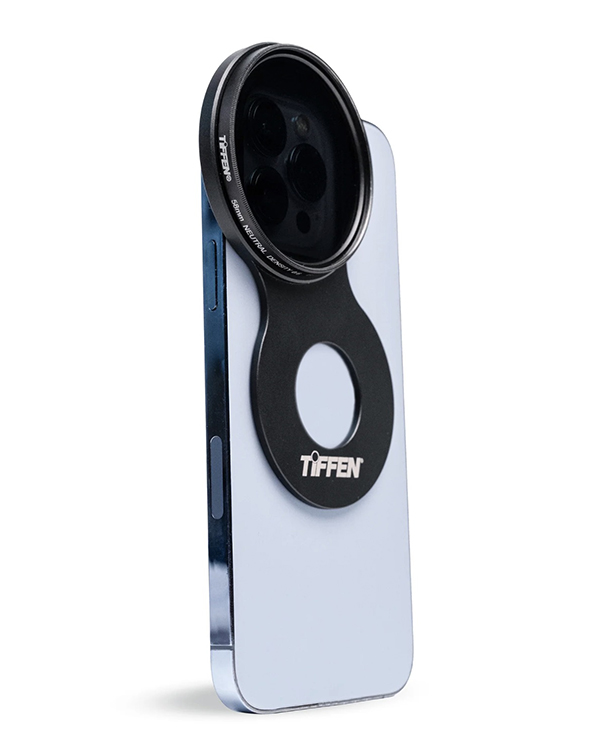
Filter This
The Tiffen Smartphone 58mm Filter Mount lets you use 58mm polarizers, ND, special effects, color correction (as well as any other 58mm filter) on your iPhone and add some magic to cellphone snaps. This is a great way to enhance smartphone photos and videos and give them a professional look.
Available in sizes to fit iPhone 13 through 16 Pro. Check Tiffen’s website to confirm compatibility.

The Tiffen Smartphone 58mm Filter Mount is priced at $29.99 and can be ordered directly from Tiffen or purchased from your favorite photographic retailer. Click here for a list of Tiffen dealers worldwide. Tiffen 58mm filters sold separately. Kits starting at $39.99 are also available.
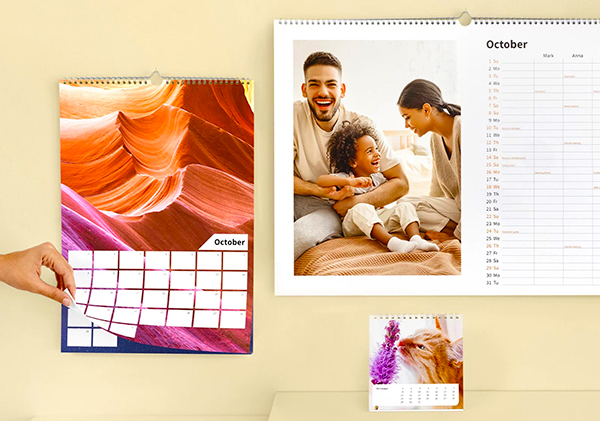
Show Off A Little – Or A Lot
Here’s a link to a story we published last year: Cool Ways to Show Off Your Pics & Claim Status as Smartphone Photography OG. It explains several great reasons for getting the images off your smartphone and out into the world for others to enjoy.
Having 2000+ images on your smartphone is a badge of honor. But having even one single masterpiece hanging on your wall is a trophy.
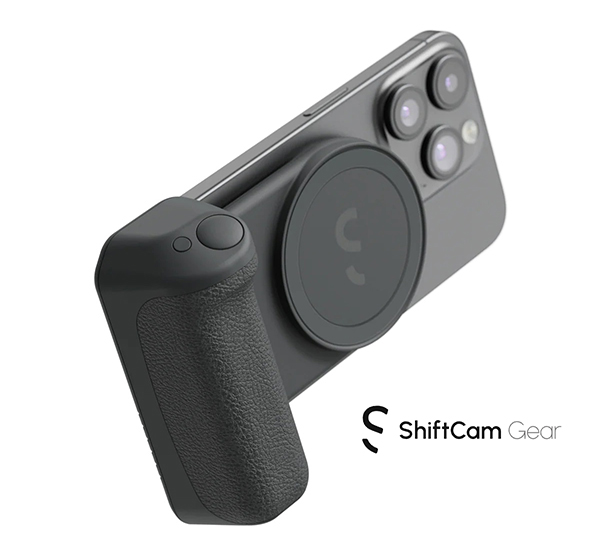
Real Camera Feel & More
We’re referring to ShiftCam. Where do we begin? The simplest way to explain ShiftCam is as a modular set of innovative tools that transform a smartphone into a device that feels, handles, performs and even looks a lot like a traditional digital camera.

ShiftCam offers two series, SnapGrip and ProGrip. Available accessories include basic grips, lights, lenses, advanced grips, support systems and more. They also bundle an array complete kits with prices ranging from about $129 to well over $1000.
When we reviewed the original ShiftCam SnapGrip a couple years back, we proclaimed: This May Be The Best Smartphone Accessory Kit Ever. We stand by that. And their products have gotten even more ingenious and useful.
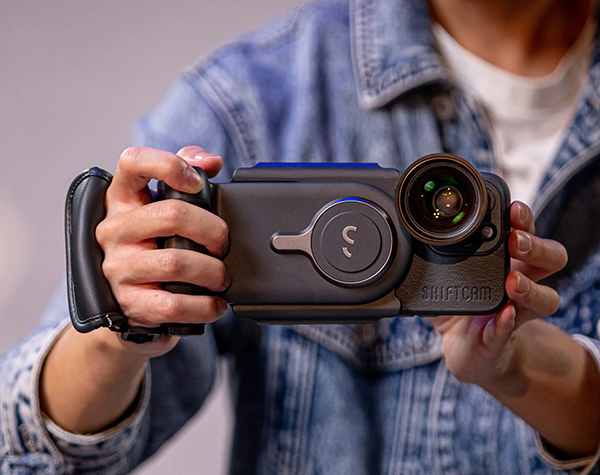
The best way to discover all of the options that can seriously elevate the joy of smartphone photography is to visit their website. Take a look at the dozens of design awards they’ve won and get a little inspiration while learning what smartphones can become with a few accessories.
Want to stay up to date on the latest smartphone features, techniques and tutorials? Join the Shutterbug Community!
Sign up for an account—it’s easy and FREE. Subscribe to our FREE newsletter (find the sign-up form on our homepage) and bookmark Shutterbug as a Favorite on your browser.
Visit our Gallery section and spend five minutes or less uploading your best shots once a week. You might even become a Shutterbug Photo of the Day photographer!
In the Galleries, you’ll see the incredible work of thousands of photographers from around the world. We encourage you to add your own images to our ever-growing collection. It’s an excellent platform to connect with other photographers and share your knowledge and passion for photography.
(If you’re worried that submitting images to the Photo of the Day gallery might be complicated, it’s not. Check out these short 1-2-3 directions.)
—Jon Sienkiewicz






























